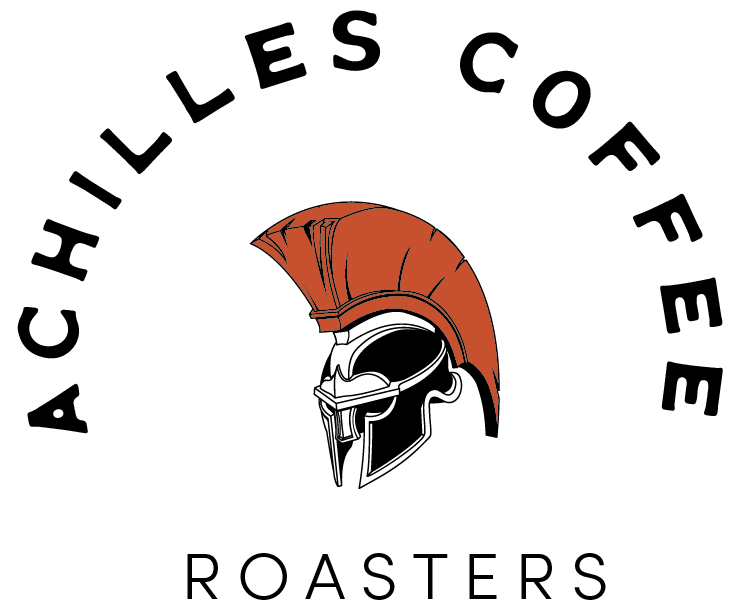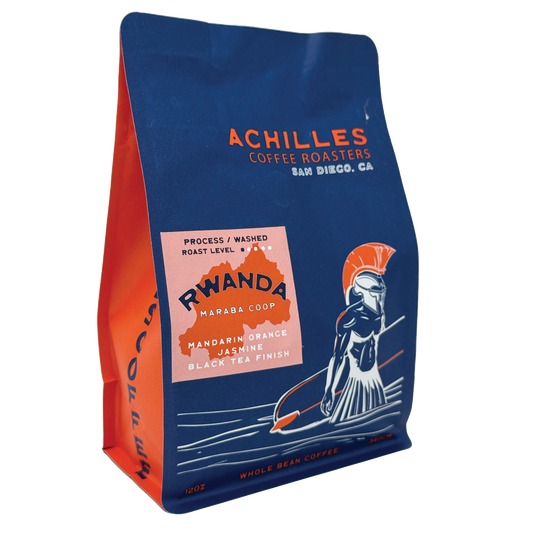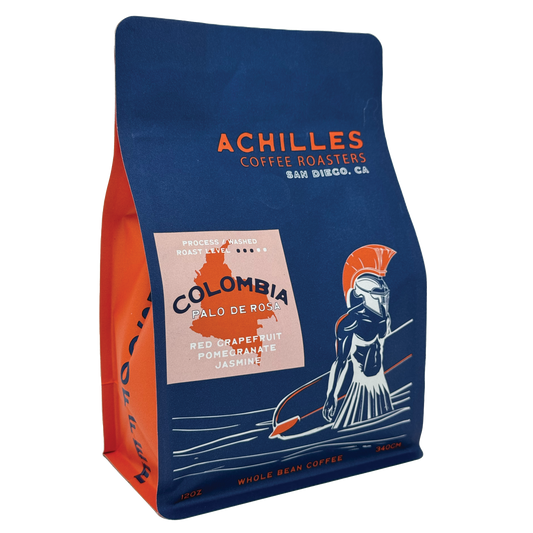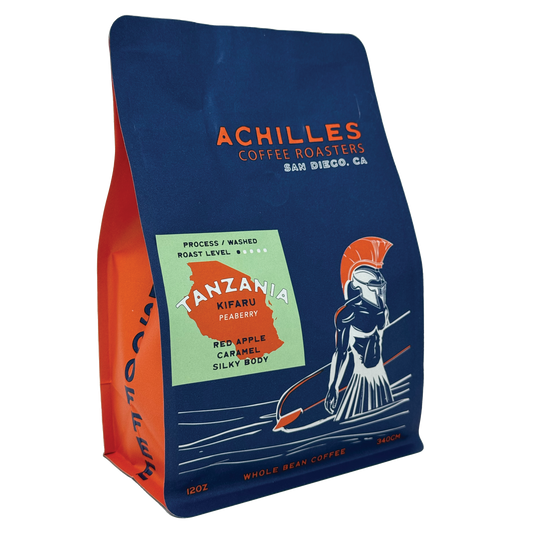Brewing coffee is both an art and a science, a delicate balance between technique and understanding the chemistry behind extraction. To truly unlock the full spectrum of flavors hidden within your coffee beans, it’s crucial to pay close attention to how you grind your beans and which type of coffee you choose for your specific brewing method. Every brewing technique—from French press to espresso to pour-over—interacts with coffee grounds differently, meaning that the grind size you use can dramatically affect the extraction process and ultimately the taste of your cup.
For instance, a grind that’s too coarse for a particular method might result in weak, under-extracted coffee with muted flavors, while an overly fine grind can cause over-extraction, leading to bitterness or unpleasant harshness. Furthermore, beyond just grind size, the characteristics of the coffee itself—including its origin, roast level, and processing method—play a significant role in how the coffee will express itself in your chosen brew method. A light roast from Ethiopia will behave very differently when brewed as a pour-over compared to a dark roast blend pulled through an espresso machine.
Developing a deep understanding of these relationships between grind size, coffee type, and brewing method empowers you to brew with confidence and consistency. It allows you to highlight the unique qualities of your beans and tailor your brewing approach to your personal taste preferences. Whether you’re a seasoned coffee enthusiast or just beginning to explore specialty coffee, mastering this balance is key to elevating your daily coffee ritual.
In this comprehensive guide, we will dive into the best grind sizes and coffee types suited for popular brewing methods. By breaking down each method and explaining how to match your grind and coffee to it, this guide will help you get the most out of your beans and optimize every cup you brew.
Why Grind Size Matters
Grind size plays a crucial role in controlling how quickly water interacts with coffee grounds during brewing. It essentially dictates the rate at which water can flow through the coffee bed, influencing how much flavor compounds are extracted. When the grind is too coarse, the water rushes through the grounds too quickly, preventing full extraction of soluble compounds. This often leads to an under-extracted cup characterized by sourness, thin body, and weak or muted flavors. On the other hand, if the grind is too fine, water struggles to pass through the compacted coffee grounds, prolonging contact time and causing over-extraction. This results in bitter, harsh, and sometimes astringent flavors that overpower the more subtle nuances of the coffee.
Finding the right grind size is therefore essential to achieving a balanced extraction where acidity, sweetness, bitterness, and body harmonize to produce a flavorful, satisfying cup. Each brewing method demands a specific grind range to optimize this balance. For example, French press requires a coarse grind to allow a slow immersion brew without clogging the filter, while espresso demands a very fine grind to create enough resistance for a short, intense extraction.
Beyond grind size, the type of coffee you choose—whether it’s a light, medium, or dark roast, and whether it’s a single-origin or a blend—also interacts uniquely with your brewing method. Light roasts and single-origin coffees often have delicate, nuanced flavors and higher acidity, making them well-suited for brewing methods that emphasize clarity and brightness, like pour-over or siphon. These methods, combined with the right grind size, allow the coffee’s origin characteristics—such as floral, fruity, or citrus notes—to shine through.
Conversely, medium and dark roasts, as well as blends designed for balance, generally perform better with brewing methods that highlight body and richness. Full immersion methods like French press or robust extractions like espresso benefit from the heavier, deeper flavor profiles these roasts provide. The grind size for these methods not only ensures proper extraction but also supports the fuller mouthfeel and bold flavors often associated with darker coffees.
Understanding how grind size and coffee type interplay with different brewing methods empowers you to fine-tune your coffee preparation, ensuring each cup highlights the beans’ best qualities and aligns with your personal taste preferences.
French Press
Grind Size: Coarse
Ideal Coffee Types: Medium to dark roasts, blends, beans with chocolate, nutty, and roasted notes
The French press is a classic immersion brewing method where coffee grounds steep fully in hot water, allowing for maximum extraction of oils and flavors. The coarse grind size is essential here because it enables water to interact with the grounds slowly and evenly, extracting rich flavors without causing over-extraction or producing a bitter taste. Using a grind that’s too fine in a French press can result in a silty, muddy texture due to grounds slipping through the metal mesh filter, which lacks the fine filtration of paper filters.
French press coffee is known for its rich, full-bodied character. The metal mesh filter allows essential coffee oils and fine particles to remain in the brew, contributing to its heavier mouthfeel and depth of flavor. This brewing style pairs exceptionally well with medium to dark roast coffees, which tend to have bold, chocolatey, nutty, and roasted notes. These flavor profiles complement the French press’s robust extraction and provide a satisfying, well-rounded cup with a smooth finish.
For the best results, grind your beans fresh to a coarse consistency just before brewing. Aim for a brewing time of about 4 minutes, using water heated between 195°F and 205°F (90-96°C). Stir gently midway through the steeping process to ensure even extraction. After brewing, press the plunger down slowly to separate the grounds, and serve immediately to enjoy the full flavor and body this method offers.
Pour-Over (V60, Chemex, Kalita Wave)
Grind Size: Medium-fine to Medium
Ideal Coffee Types: Light to medium roasts, single-origin coffees, those with floral, citrus, and fruity flavor profiles
Pour-over brewing is a popular manual method that relies on gravity to draw water through coffee grounds held in a paper filter. This method is celebrated for producing a clean, bright cup that highlights the coffee’s clarity and delicate flavor nuances. Achieving the ideal grind size for pour-over is crucial; a medium-fine to medium grind allows water to flow at just the right rate to extract flavors evenly without under- or over-extracting.
The medium-fine grind balances extraction time, giving enough contact between water and coffee particles to unlock the complex aromas and flavors inherent in the beans, especially those from light to medium roasts. Light roasts often showcase vibrant notes like floral, citrus, berries, and other fruit-forward flavors, which are beautifully preserved by pour-over’s gentle brewing process. Single-origin coffees are particularly well-suited for this method because pour-over emphasizes their unique terroir-driven complexities, allowing drinkers to savor subtle differences in acidity, sweetness, and aroma that can be lost in other brewing styles.
To get the most out of your pour-over, controlling variables like your pour rate and water temperature is key. Using water heated between 195°F and 205°F (90°C to 96°C) helps extract the right balance of acids and sugars. Pour slowly and steadily, often in a circular motion, to ensure all grounds are evenly saturated and extracted. This precise technique, combined with the appropriate grind size and coffee type, results in a vibrant, crisp, and aromatic cup that truly celebrates the beans’ origin and roasting profile.
Espresso
Grind Size: Very Fine (Espresso Grind)
Ideal Coffee Types: Medium to dark roasts, blends, beans featuring caramel, chocolate, and nutty flavor notes
Espresso brewing is a highly specialized method that relies on forcing hot water through finely ground coffee at high pressure, typically around 9 bars, to produce a concentrated, richly flavored shot. Because water passes through the coffee so quickly—usually within 25 to 30 seconds—the grind size must be very fine to slow down the flow and allow sufficient extraction of flavors. This very fine grind ensures a dense puck of coffee grounds, which helps create the signature intense flavor and thick, velvety crema that espresso is known for.
Medium to dark roasted beans tend to work best for espresso because they develop sweetness, body, and caramelization during roasting that hold up well under the pressure and short brew time. These roast levels offer deeper, richer notes like chocolate, caramel, toasted nuts, and subtle spice, which blend harmoniously in the concentrated espresso shot. Espresso blends are often crafted to combine the best qualities of multiple beans—balancing acidity, body, and sweetness to deliver a consistent and well-rounded flavor profile. This is especially important for espresso because it serves as the base for many milk-based drinks like lattes and cappuccinos, where the espresso’s creaminess and flavor intensity must shine through.
For the best espresso results, precise dosing and even tamping are critical. Measuring the correct amount of finely ground coffee and compressing it evenly in the portafilter ensures uniform water flow and extraction, preventing channeling and bitterness. Mastering these details will help you achieve a rich, full-bodied espresso shot with a beautiful crema layer—a hallmark of expertly brewed coffee.
Aeropress
Grind Size: Medium to Fine (Depending on Recipe)
Ideal Coffee Types: Light to medium roasts, single-origin or blends
The Aeropress is one of the most versatile brewing methods available, prized for its adaptability and ability to produce a wide range of coffee styles—from clean and bright to rich and espresso-like. It works by using gentle air pressure to force water through the coffee grounds, combining immersion and filtration in a compact, portable device. This process typically takes between 1 to 3 minutes, depending on the recipe, allowing for great control over extraction variables like brew time, water temperature, and grind size.
For most standard Aeropress recipes, a medium grind is ideal because it balances extraction speed with flavor clarity. However, many coffee enthusiasts experiment with finer grind sizes—closer to espresso grind—especially for “espresso-style” Aeropress shots, which produce a more concentrated and intense cup reminiscent of traditional espresso but with a unique smoothness.
Light and medium roasts are often the preferred choice for Aeropress brewing because this method accentuates bright acidity, floral and fruity notes, and the intricate flavor profiles typical of single-origin beans. The pressure-driven extraction enhances clarity and body, allowing the complex flavors to shine without overwhelming bitterness.
To get the most out of your Aeropress coffee, it’s important to experiment. Try adjusting variables like water temperature—often between 175°F and 205°F—steep time, and grind size to find the balance that suits your palate. With a little practice, you can tailor your brew to highlight the unique characteristics of your coffee beans, whether you prefer a lighter, vibrant cup or a richer, fuller-bodied shot. This flexibility makes the Aeropress a favorite among both casual drinkers and serious coffee aficionados alike.
Drip Coffee Maker
Grind Size: Medium
Ideal Coffee Types: Medium roasts, blends, coffees with balanced acidity and sweetness
Automatic drip coffee machines are among the most common brewing methods found in homes and offices. They work by heating water and dripping it over coffee grounds held in a filter basket, relying on gravity to extract flavor as the water passes through the grounds and filters into a carafe below. Because the brewing time and water flow are predetermined by the machine’s design, it’s important to use the right grind size to ensure even extraction and optimal flavor.
A medium grind is generally the best fit for drip machines because it provides the perfect balance—allowing water to flow steadily through the grounds without rushing through too quickly (which causes under-extraction) or lingering too long (which causes bitterness from over-extraction). The uniformity of medium grounds helps avoid uneven extraction, which can lead to sour or muddy flavors.
Medium roasts tend to shine in drip brewing due to their smooth, balanced flavor profiles. They often display moderate acidity paired with gentle sweetness and subtle complexity, making them approachable and enjoyable for daily drinking. Coffee blends, which combine beans from multiple origins, also perform well in drip machines because their flavor profiles are crafted for balance and consistency. This makes blends a versatile choice that suits a wide variety of tastes and preferences.
To get the best cup from your drip machine, use filtered water to avoid unwanted impurities that can alter the coffee’s taste. Additionally, regular cleaning of your machine is crucial—residual oils and mineral buildup can impart off-flavors and reduce the overall quality of your brew. Following these tips alongside using the appropriate medium grind will help you consistently enjoy a flavorful, well-extracted cup from your automatic drip coffee maker.
Cold Brew
Grind Size: Very Coarse
Ideal Coffee Types: Medium to dark roasts, beans with chocolate, caramel, and nutty notes
Cold brew coffee has surged in popularity for its smooth, mellow flavor and low acidity, making it an excellent choice for those who prefer a less bitter, more refreshing coffee experience. The process involves steeping coffee grounds in cold or room-temperature water for an extended period—typically between 12 and 24 hours. Because the extraction happens slowly over many hours, the grind size plays a crucial role in preventing over-extraction and ensuring a clean, balanced cup.
A very coarse grind is ideal for cold brew because the large particle size slows the extraction process, reducing the risk of bitterness and excessive sediment in the final product. Using coarse grounds also makes filtering easier, helping to avoid gritty texture or unwanted sludge in your glass. This grind size is somewhat similar to what you’d use for a French press but sometimes even chunkier to accommodate the extended steep time.
Medium to dark roasted beans work best for cold brew due to their naturally smoother, richer flavor profiles. The mellow chocolate, caramel, and nutty notes of these roasts are enhanced by the cold extraction, which softens acidity and highlights sweetness and body. Lighter roasts, which tend to have bright, fruity, or floral characteristics, might taste flat or underwhelming when cold brewed since the method mutes acidity and delicate aromatics.
To brew a great cold brew, a common starting point is using a coffee-to-water ratio of about 1:8 (one part coffee to eight parts water). After steeping, it’s important to filter the coffee thoroughly using a fine mesh sieve, cheesecloth, or specialized cold brew filters to remove grounds and sediment for a smooth finish. Once strained, cold brew concentrate can be diluted with water, milk, or served over ice, allowing for versatile customization.
In summary, choosing a very coarse grind paired with medium to dark roasts ensures a flavorful, clean, and well-balanced cold brew that capitalizes on the strengths of the brewing method and your coffee beans.
Moka Pot
Grind Size: Fine, slightly coarser than espress
Ideal Coffee Types: Medium to dark roasts, Italian-style blends
The moka pot, sometimes called a stovetop espresso maker, is a timeless brewing device known for producing rich, strong, espresso-like coffee without the need for expensive machinery. It brews by using steam pressure generated from boiling water in the bottom chamber, which forces the water up through a bed of coffee grounds and into the top chamber as brewed coffee. To get the best results from a moka pot, both grind size and coffee choice are critical.
The ideal grind size for a moka pot is fine—finer than drip but not quite as fine as true espresso grind. This middle ground allows the hot water and steam to pass through the coffee with just the right amount of resistance. If the grind is too coarse, under-extraction can occur, resulting in a weak and flat cup. On the other hand, a grind that’s too fine can clog the filter basket, causing excessive pressure, over-extraction, and even potential safety issues.
Medium to dark roasted coffees work particularly well with moka pots. These roasts bring out bold, robust flavors that complement the strong and concentrated nature of the brew. Notes of dark chocolate, roasted nuts, caramel, and even a touch of smokiness are enhanced in this brewing style. Italian-style blends—often a mix of Arabica and Robusta beans—are especially traditional for moka pot brewing, as they provide the richness, intensity, and crema-like texture associated with classic stovetop coffee.
Tips for optimal moka pot brewing:
-
Don't tamp the coffee grounds. Simply level them off without compressing; tamping can restrict water flow and lead to over-extraction or buildup of pressure.
-
Use hot water in the bottom chamber to reduce the time it takes to build pressure and minimize bitterness from the aluminum heating up.
-
Brew with the lid open and remove the moka pot from heat as soon as the coffee begins to gurgle to prevent burning the brew.
-
Clean thoroughly after each use to prevent old coffee oils from tainting future brews.
In summary, choosing the right grind size—fine but not too fine—and using the right beans can elevate your moka pot coffee to rich, bold perfection. With proper technique and quality ingredients, the moka pot delivers a satisfying, espresso-style cup right from your stovetop.
Matching Coffee Types to Brewing Methods
Understanding Roast Levels: Matching Roast Profiles with Brewing Methods
Choosing the right roast level for your preferred brewing method can dramatically impact your coffee’s flavor, aroma, and overall experience. Roast levels—light, medium, and dark—each bring out different qualities in the coffee bean. When paired thoughtfully with a brewing method that complements those characteristics, you unlock the bean’s full potential.
Light Roasts:
Best suited for pour-over, Aeropress, and other methods emphasizing clarity, brightness, and origin complexity.
Light roasts are roasted for a shorter duration and at lower temperatures, which preserves more of the bean’s original characteristics—especially its acidity, floral or fruity notes, and nuanced flavors. These coffees are often described as bright, tea-like, and complex.
Ideal brewing methods like pour-over, Chemex, and Aeropress allow these subtle flavors to shine. These methods offer precise control over variables like water temperature, brew time, and flow rate, which are essential when highlighting the delicate traits of light roasts. These coffees also work well with manual brewers that use paper filters, helping to produce a clean, crisp cup.
Great for:
-
African single-origins with citrus or berry notes
-
Washed Central American coffees with floral aromatics
-
High-altitude beans with bright acidity
Medium Roasts:
Extremely versatile, great for drip, Aeropress, French press, and Moka pot, balancing sweetness and acidity.
Medium roasts offer a harmonious balance between the origin's flavor and the roast's development. The acidity is softer, sweetness is more pronounced, and the body begins to thicken. These coffees often showcase notes of caramel, milk chocolate, stone fruits, and gentle spices.
Thanks to their balance, medium roasts work well across a wide variety of brewing methods—from automatic drip brewers and French presses to Aeropress and Moka pots. Their adaptability makes them a favorite among both casual drinkers and enthusiasts.
Great for:
-
Everyday blends with caramel and nutty flavors
-
Central and South American beans with round acidity
-
Mild single-origins used in filter methods
Dark Roasts:
Ideal for espresso, French press, cold brew, and Moka pot, providing boldness, body, and richness.
Dark roasts are roasted the longest and at the highest temperatures, which results in more pronounced roasted flavors, reduced acidity, and increased body. Think chocolate, molasses, toasted nuts, and smoky undertones. Because the origin characteristics are mostly roasted out, the flavor is more about the roast profile than the bean’s original terroir.
These bold flavors pair well with brewing methods that produce rich, full-bodied cups—like espresso, French press, Moka pot, and cold brew. These methods highlight dark roast coffees’ intensity and mouthfeel, making them excellent for milk-based drinks as well.
Great for:
-
Espresso shots with chocolate and caramel notes
-
Cold brew with low acidity and smooth finish
-
Traditional Italian-style Moka pot coffee
Single-Origin vs. Blend:
-
Single-Origin Coffees – These are beans sourced from a single country, region, or even a single farm. They often have distinct flavor notes tied to their terroir and are best appreciated through methods that highlight complexity and clarity, such as pour-over, Chemex, or Aeropress. These methods allow drinkers to experience the uniqueness of the coffee’s origin.
-
Blends – These combine beans from different regions to create a balanced, consistent flavor profile. They’re crafted to perform reliably across various brewing methods, including espresso machines, automatic drip brewers, and French presses. Blends are excellent for everyday drinkers who value harmony over nuance and are especially great for milk-based drinks due to their consistency.
Final Thoughts
Choosing the right grind size and coffee type for your brewing method is key to unlocking your beans’ full potential. Experimentation is part of the fun—try dialing in grind size, adjusting brew times, and testing different roast levels to discover your ideal cup.
By understanding these fundamentals, you’re better equipped to craft coffee that suits your taste and highlights the unique qualities of every bean. Whether you’re savoring a delicate pour-over or pulling a rich espresso shot, mastering grind size and coffee type will elevate your brewing game to new heights.








